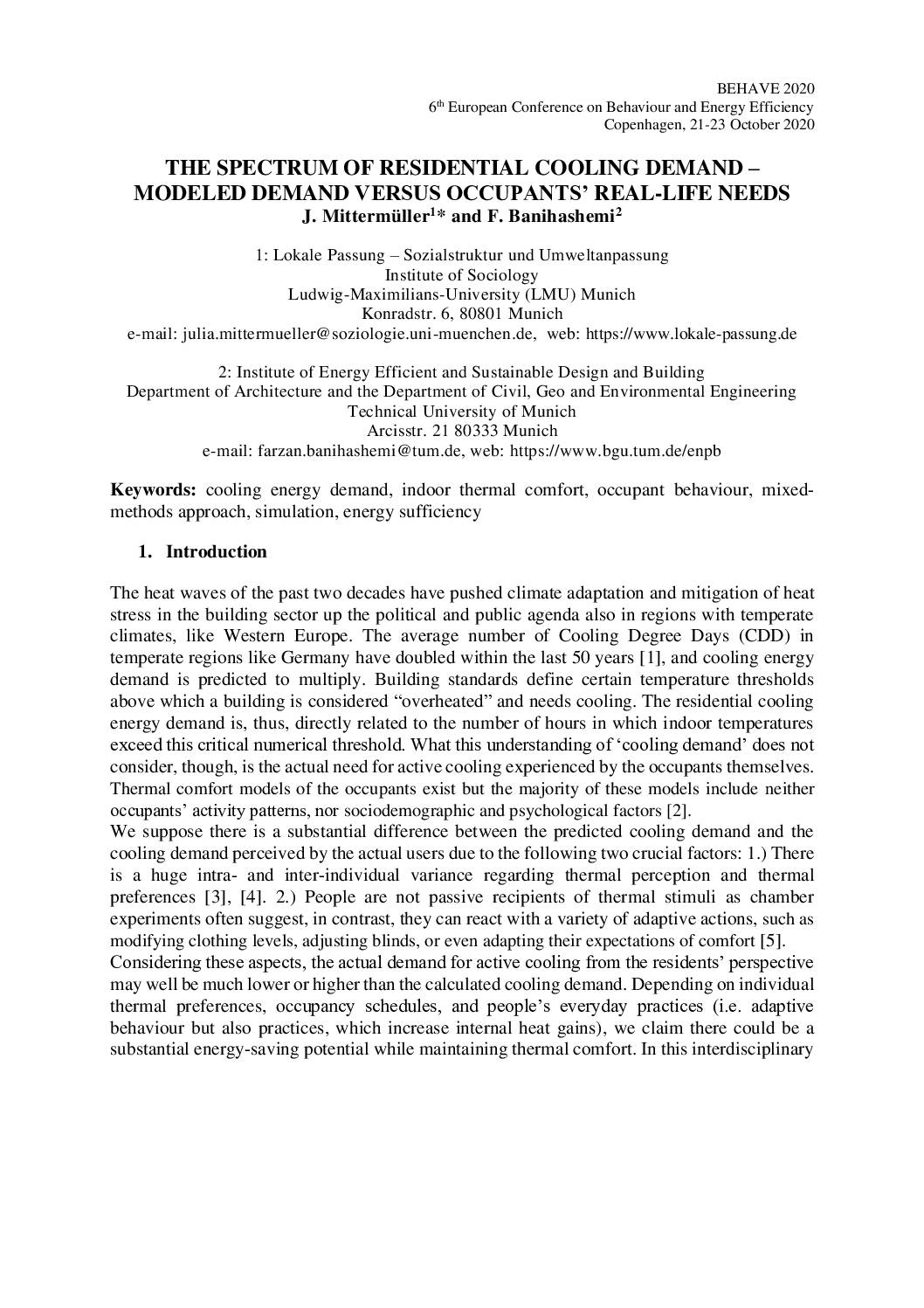The heat waves of the past two decades have pushed climate adaptation and mitigation of heat stress in the building sector up the political and public agenda also in regions with temperate climates, like Western Europe. The average number of Cooling Degree Days (CDD) in temperate regions like Germany have doubled within the last 50 years, and cooling energy demand is predicted to multiply. Building standards define certain temperature thresholds above which a building is considered “overheated” and needs cooling. The residential cooling energy demand is, thus, directly related to the number of hours in which indoor temperatures exceed this critical numerical threshold. What this understanding of ‘cooling demand’ does not consider, though, is the actual need for active cooling experienced by the occupants themselves. Thermal comfort models of the occupants exist but the majority of these models include neither occupants’ activity patterns, nor socio-demographic and psychological factors.
We suppose there is a substantial difference between the predicted cooling demand and the cooling demand perceived by the actual users due to the following two crucial factors: 1.) There is a huge intra- and inter-individual variance regarding thermal perception and thermal preferences; 2.) People are not passive recipients of thermal stimuli as chamber experiments often suggest, in contrast, they can react with a variety of adaptive actions, such as modifying clothing levels, adjusting blinds, or even adapting their expectations of comfort.
Considering these aspects, the actual demand for active cooling from the residents’ perspective may well be much lower or higher than the calculated cooling demand. Depending on individual thermal preferences, occupancy schedules, and people’s everyday practices (i.e. adaptive behaviour but also practices, which increase internal heat gains), we claim there could be a substantial energy-saving potential while maintaining thermal comfort. In this interdisciplinary mixed-methods study, we seek to quantify this potential by comparing the predicted cooling demand based on thermal comfort simulations of residential buildings in Munich, Germany, with the perceived cooling demand based on the residents’ thermal comfort levels stated in our survey.
Download sourceShare this

Sector: District energy
Country / Region: Germany
Tags: active cooling, climate change adaptation, climate change mitigation, cooling degree days, cooling demand, domestic heating, energy, energy demand, residential buildings, temperate climateIn 1 user collection: Session 5a: Behaviour integration into energy modelling for policy development – 2
Knowledge Object: Publication / Report
Publishing year: 2020
Author: J. Mittermüller, F. Banihashemi
Content:

